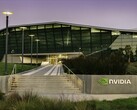
5 trailblazing technologies primed to supercharge humankind by 2035
CheckMag
Over the next decade, these five transformative tech fields are poised to reshape human society and AI is at the center of all. The possibilities are staggering and humankind could solve pressing issues related to climate change and an array of diseases, including aging itself.Bogdan Solca Published 🇪🇸 🇵🇹 ...
AI & Machine Learning is without a doubt the most impactful technology right now and will continue to lead the pack in the coming years. AI is also in a unique position that facilitates its integration with other emerging technologies, as it is set to improve healthcare (diagnostics, personalized medicine), automation (industry, transportation), and decision-making systems, reshaping economies and daily life.
The other four technologies that are prioritized based on their potential for widespread societal impact, driven by current trends, investment, and breakthroughs observed up to August 2025 are as follows:
- Biotechnology and Genetic Engineering: Gene-editing technologies like CRISPR, synthetic biology, and personalized medicine will revolutionize healthcare, agriculture, and environmental solutions, tackling diseases and food security.
- Quantum Computing: Quantum computers will accelerate problem-solving in cryptography, materials science, and complex simulations, potentially transforming industries like finance, logistics, and pharmaceuticals.
- Clean Energy and Climate Tech: Innovations in renewable energy (solar, wind, fusion), energy storage, and carbon capture will address climate change and drive sustainable economic growth.
- Robotics and Automation: Advanced robotics, coupled with AI, will transform manufacturing, logistics, healthcare, and service industries, increasing efficiency but challenging workforce dynamics.
AI & Machine Learning
Agentic AI Systems will probably be the most impactful development in this field. The AI agents autonomously perform complex tasks, such as managing workflows, scheduling, or decision-making in industries like healthcare and logistics. There are many startups focusing on this approach and leveraging multimodal models for real-time adaptability, rather than training a huge model that tries to do everything.
For computer users, AI agents can significantly improve the way we interact with the OS. Just by using the microphone, we can instruct the integrated AI agent to perform all sorts of small tasks, like opening an app, dictating text, changing certain settings regarding gaming performance or picture quality etc.
Other notable developments in this field include:
- AI-Accelerated Drug Discovery: Greatly speeds up the drug production and testing processes. Labs can come up with viable drugs in a matter of months, not years. Some companies to watch: Anima Biotech, Atomwise, BPGbio.
- Autonomous Driving Systems: Companies like Tesla and Mercedes Benz have been developing this type of AI for some years now. With the latest advancements, self-driving cars now benefit from improved machine vision, sensor fusion, and faster real-time decision-making.
- Generative AI for Creative Applications: While the industry is still divided regarding the use of AI for artistic purposes and regulators are trying to step in to help artists, advancements are still being made in this field, Apart from the text-to-image models like Midjourney, Stable Diffusion and Dall-E that have been refined over the last 3 years, there are now quite a few text-to-video or image-to -video solution such as Runway, Sora, Synthesia or Kling. Muusic AI generators like Suno are also gaining traction for their accessibility and innovation.
- AI for Cybersecurity and Privacy: This type of AI tries to handle real-time fraud detection, privacy protection, and threat intelligence. Examples include Aaru’s multi-agent systems for predictive modeling and AI-based tools for encrypting sensitive data.
Biotechnology and Genetic Engineering
Significant progress is being made on extending human lifespan and some scientists believe we could see age reversal therapies by the end of these decade. Other promising projects include:
- CRISPR-Based Gene Therapies: Advances in CRISPR-Cas9, particularly improved delivery systems like lipid nanoparticles, are enabling precise treatments for genetic disorders such as sickle cell disease, cystic fibrosis, and rare conditions like Rett syndrome. Projects like those from Anavex Life Sciences, with their drug blarcamesine for Alzheimer’s and Rett syndrome, show promise in clinical trials, with submissions for regulatory approval later this.
- mRNA Technology Expansion: Beyond vaccines, mRNA platforms are being developed for cancer, autoimmune diseases, and genetic disorders. Self-amplifying RNA, which requires smaller doses for therapeutic effects, is a key focus for 2025, with applications in personalized medicine and oncology.
- Bioprinting for Organ Transplants: Multi-material bioprinting is advancing toward creating hybrid tissues and, eventually, functional organs like hearts and kidneys. These projects aim to reduce transplant waiting lists, with significant progress expected in the next decade.
Quantum Computing
While quantum computers can, in theory, pose a threat to some traditional digital security and cryptography systems, the benefits of the exponential processing power jump for science far outweighs the security-related conundrums. The most notable projects in this field include:
- IBM Kookaburra: a modular quantum processor set to launch later this year or in 2026. This will integrate 4,158 qubits by connecting multiple modules and will combine quantum memory with logic operations, plus a quantum communication link.
- Google’s Willow Chip and Error Correction Breakthrough: Google’s Quantum AI team has developed the Willow chip, achieving a milestone in quantum error correction (QEC) by breaking the QEC threshold. This project demonstrates reduced error rates with increased physical qubits, paving the way for scalable, fault-tolerant quantum computers by 2029, with applications in chemistry and materials science.
- Microsoft’s Majorana 1 Chip and Quantum Ready Initiative: The Majorana 1 chip, utilizing topological qubits, aims to scale to a million qubits on a single chip. Their Quantum Ready Initiative, in collaboration with DARPA’s US2QC program, focuses on fault-tolerant prototypes for enterprise applications, targeting commercialization within several years.
- SpinQ Superconducting Quantum Computer: This Chinese project utilises circuits with Josephson junctions, where qubits are formed by macroscopic quantum effects in order to offer scalable qubit numbers, high gate fidelity, and controllable multi-qubit coupling. SpinQ also commercializes small-scale quantum computers for educational purposes.
Clean Energy and Climate Tech
An important sector that should help humanity tackle the global warming and the resulting climatic changes. The next 10 years are crucial in this regard and the most promising projects include:
- Advanced Energy Storage Solutions: Projects like Tesla’s Megapack and next-generation solid-state batteries are addressing intermittent renewable energy supply. These grid-scale storage systems balance supply and demand, with lithium-ion battery costs dropping 40% in 2024 alone, enabling widespread adoption for solar and wind integration.
- Green Hydrogen Production: Initiatives like H2Pro’s E-TAC method, which splits water with over 95% efficiency, and Sweden’s Hybrit project, using fossil-free hydrogen for steel production, are scaling clean hydrogen for industrial and transport applications, offering long-term energy storage and decarbonization.
- Carbon Capture, Utilization, and Storage (CCUS): Companies like Climeworks, Carbon Clean, and Global Thermostat are advancing direct air capture (DAC) technologies. Shell and Chevron’s commercial-scale CCUS projects for industrial processes are also gaining traction, supported by a growing carbon credit market and an 88 million metric ton CO2 capture pipeline.
- Small Modular Reactors (SMRs) and Nuclear Fusion: Advanced nuclear projects, including SMRs from companies like NuScale and fusion research from startups like Commonwealth Fusion Systems, are progressing toward commercialization. These aim to provide reliable, low-carbon energy, with a nuclear renaissance driven by AI-driven energy demand.
Robotics and Automation
This field is starting to gain significant traction, with big companies like Nvidia and Tesla already focusing more on it. A future where humans and androids collaborate to bring an era of prosperity all over the world is not that far-fetched when we see projects like these taking shape:
- Humanoid Robots: The most advanced models include the Apptronik’s Apollo, 1X Technologies’ NEO Gamma, and Figure AI’s BotQ, which focus on humanoid robots for tasks in manufacturing, warehousing, and service sectors. These robots integrate AI for dynamic motion control and adaptability, with Apptronik raising $350M to scale production for automotive and logistics applications.
- Collaborative Robots (Cobots) with Enhanced AI: Companies like Robotnik are advancing cobots with AI and machine learning for real-time adaptability and simplified programming, making them accessible to SMEs. These robots excel in precision tasks like assembly and packaging, with increased safety features for human-robot collaboration in dynamic environments.
- Robotics in Construction and Agriculture: Canvas is revolutionizing construction with AI-driven robotic tools for drywall installation, improving speed and precision, with $43M in funding. In agriculture, CNH Industrial’s acquisition of Advanced Farm’s robotic apple and strawberry pickers is scaling automated harvesting.
- Open-Source Robotics Platforms: Evezor’s Tobor and SCARA robot arms, built on open-source frameworks like ROS, democratize automation with affordable, modular designs and drag-and-drop programming. Similarly, NVIDIA’s Isaac Sim and GR00T N1 foundation model support generalist robotics development, enabling broader innovation across industries.
Source(s)
Compiled using Grok 3 with fact-checking by Bogdan Solca


















